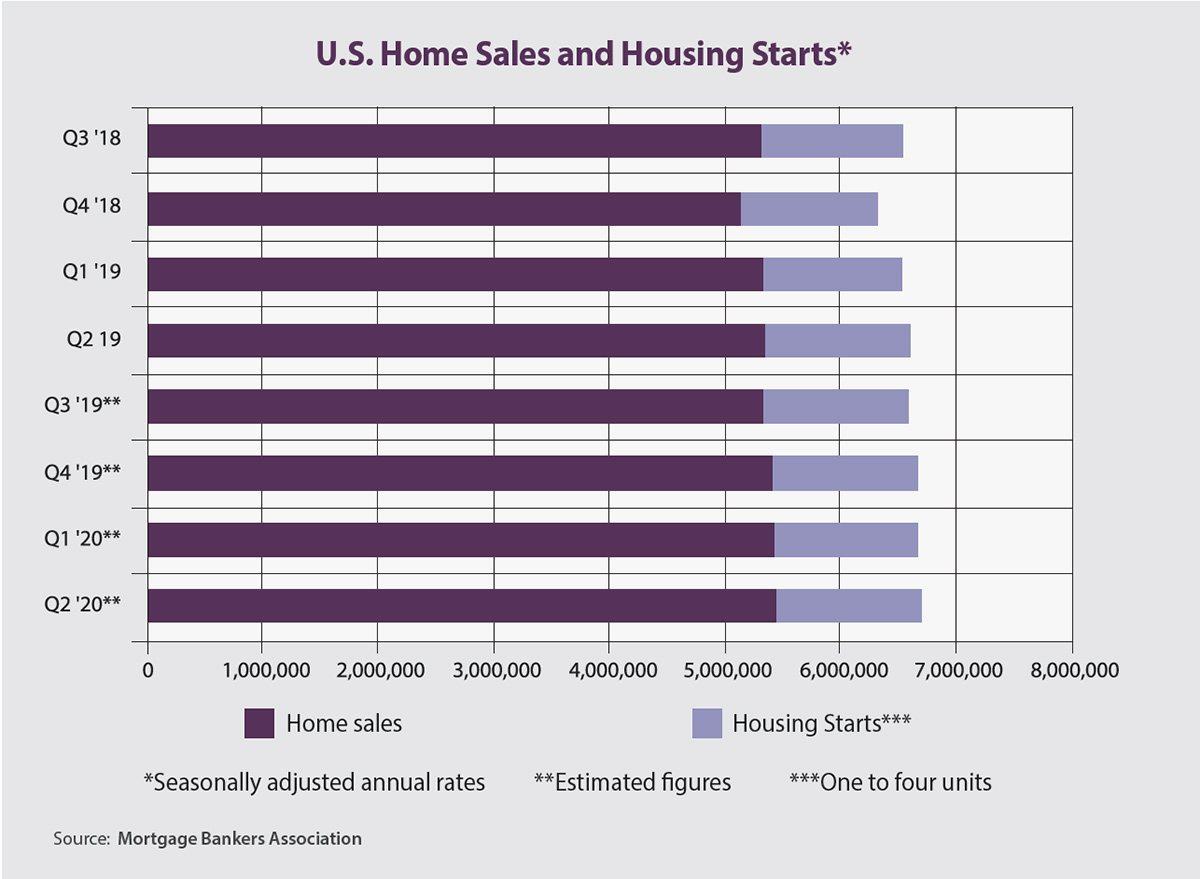There was a popular episode of the hit TV sitcom “Seinfeld” in which the character George Costanza declares that it’s the “Summer of George.” If this past summer had an aptly named motto, it would be the “Summer of Falling Interest Rates.”
This past July, the Federal Reserve lowered short-term interest rates for the first time since 2008, citing ongoing uncertainty around trade, lower-than-expected inflation and weakness in the global economy. The Fed also left room for additional cuts at upcoming meetings, but noted that this was likely to be a midcycle adjustment, rather than a sustained move toward much lower rates. The Mortgage Bankers Association (MBA) expects the Fed will cut rates one more time in 2019 — and again in early 2020 — as economic growth weakens.
Mortgage rates have declined for most of this year and are currently sitting at three-year lows. It’s hard to believe it was only last fall that the industry was experiencing a sharp drop-off in refinancing activity and expecting mortgage rates in 2019 to be in the 5% range, not closer to 3%. Times have certainly changed.
The good news for mortgage lenders and originators is that with this recent drop in rates, more borrowers are now “in the money” and have a rate incentive to refinance. In second-quarter 2019 alone, refinance applications increased 30% from the first quarter. In the first two weeks of August, refinance applications surged another 50%, which will lead to higher-than-anticipated origination volumes for the third and fourth quarters of this year.
The lower interest rate environment should continue to feed this refinance wave, which is why we now expect 2019 refi originations to increase 38% year over year to $633 billion. The decline in borrowing costs, along with slower home-price appreciation, also have benefited prospective homebuyers. Purchase applications were up about 6% year over year this past July.
Lower mortgage rates boosted the purchasing power of prospective buyers over the summer, but the economic causes of the interest rate drop have the potential to curb home sales, especially if hiring slows and unemployment increases. Consumer spending and sentiment remain strong because of the strength of the job market, but recent volatility in the stock market and concentrated regional impacts from the trade war — such as in the Farm Belt and manufacturing hubs — all pose growing threats to consumer psyche, housing demand and the U.S. economy.
Economic growth pulled back by a percentage point to 2.1% in the past second quarter, and business sentiment appears to be trending downward. For now, the labor market remains robust. Unemployment is below 4%, businesses are still hiring and job openings are elevated, but they are beginning to be drop. Wage growth is fairly strong but also appears to have leveled out.
Even if the economy slows to around 1% growth next year, as the MBA expects, the housing market will continue to be supported by favorable demographic trends. Millennials are now entering their prime homebuying years, and more are getting married and having children — major milestones that typically pull them toward homeownership. Credit continues to be provided in a sustainable fashion. And even with a slight increase in the first half of this year, mortgage delinquencies and foreclosure inventories are still at historically low levels.
It bears repeating that the undersupply of housing — and the upward pressure it continues to put on home prices — is still the primary obstacle to homeownership for many aspiring first-time buyers. It doesn’t matter how low mortgage rates are if home shoppers can’t find an affordable home to buy. Single-family construction starts are expected to fall just below last year’s sluggish pace to 854,000 units in 2019, before rising slightly to 884,000 units in 2020. Historically, the U.S. should be building closer to 1.5 million new homes.
Overall, there are risks and opportunities for the housing market heading into 2020. The MBA anticipates purchase-mortgage originations will increase 6% this year to $1.26 trillion, and 1% to 2% growth as the economy shifts into a lower gear next year.
Author
-

Mike Fratantoni is chief economist and senior vice president of research and industry technology at the Mortgage Bankers Association (MBA). He is responsible for overseeing MBA’s industry surveys, benchmarking studies, economic and mortgage origination forecasts, industry-technology efforts, and policy-development research for the single-family and commercial/multifamily markets. Prior to joining MBA, Fratantoni worked in risk management and senior economist roles at Washington Mutual and Fannie Mae.
View all posts






